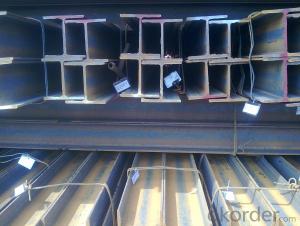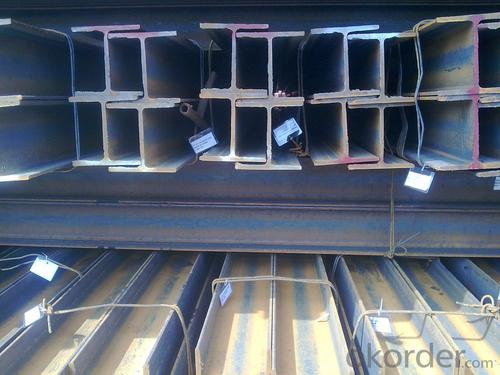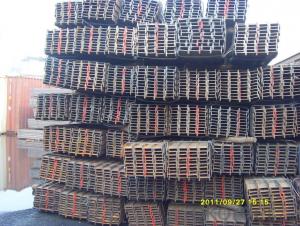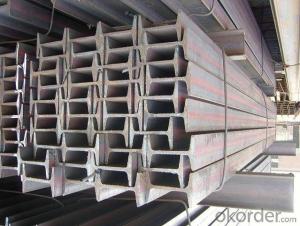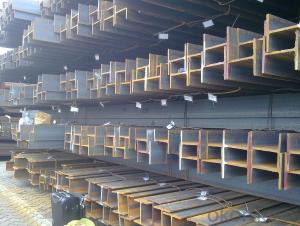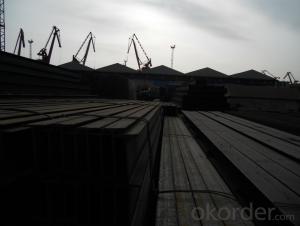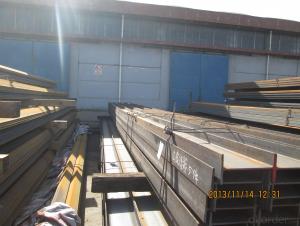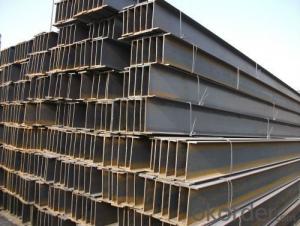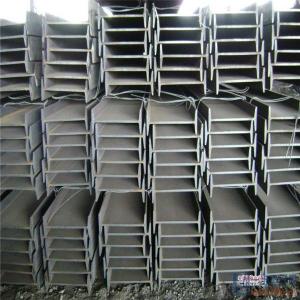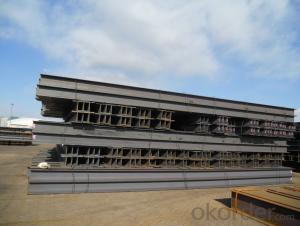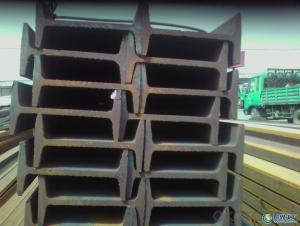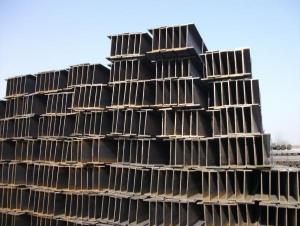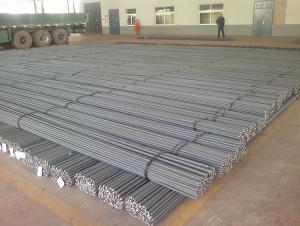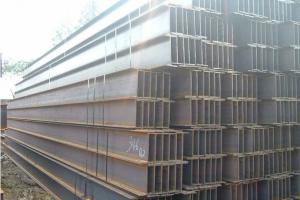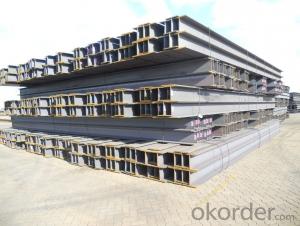H Beam with Good Quality and Multiple Material for Sale
- Loading Port:
- Tianjin
- Payment Terms:
- TT OR LC
- Min Order Qty:
- 25 m.t.
- Supply Capability:
- 20000 m.t./month
OKorder Service Pledge
OKorder Financial Service
You Might Also Like
Specification
Product Description:
OKorder is offering H Beam with Good Quality and Multiple Material for Sale at great prices with worldwide shipping. Our supplier is a world-class manufacturer of steel, with our products utilized the world over. OKorder annually supplies products to European, North American and Asian markets. We provide quotations within 24 hours of receiving an inquiry and guarantee competitive prices.
Product Applications:
H Beam with Good Quality and Multiple Material for Sale are ideal for structural applications and are widely used in the construction of buildings and bridges, and the manufacturing, petrochemical, and transportation industries.
Packaging & Delivery:
Packaging Detail: products are packed in bundle and then shipped by container or bulk vessel, deformed bar is usually naked strapping delivery, when storing, please pay attention to moisture proof. The performance of rust will produce adverse effect.
Each bundle weight: 2-3MT, or as required
Payment term: TT or L/C
Delivery Detail: within 45 days after received advanced payment or LC.
Label: to be specified by customer, generally, each bundle has 1-2 labels
Trade terms: FOB, CFR, CIF
FAQ:
Q1: Why buy Materials & Equipment from OKorder.com?
A1: All products offered byOKorder.com are carefully selected from China's most reliable manufacturing enterprises. Through its ISO certifications, OKorder.com adheres to the highest standards and a commitment to supply chain safety and customer satisfaction.
Q2: How do we guarantee the quality of our products?
A2: We have established an advanced quality management system which conducts strict quality tests at every step, from raw materials to the final product. At the same time, we provide extensive follow-up service assurances as required.
Q3: How soon can we receive the product after purchase?
A3: Within three days of placing an order, we will begin production. The specific shipping date is dependent upon international and government factors, but is typically 7 to 10 workdays.
Images:
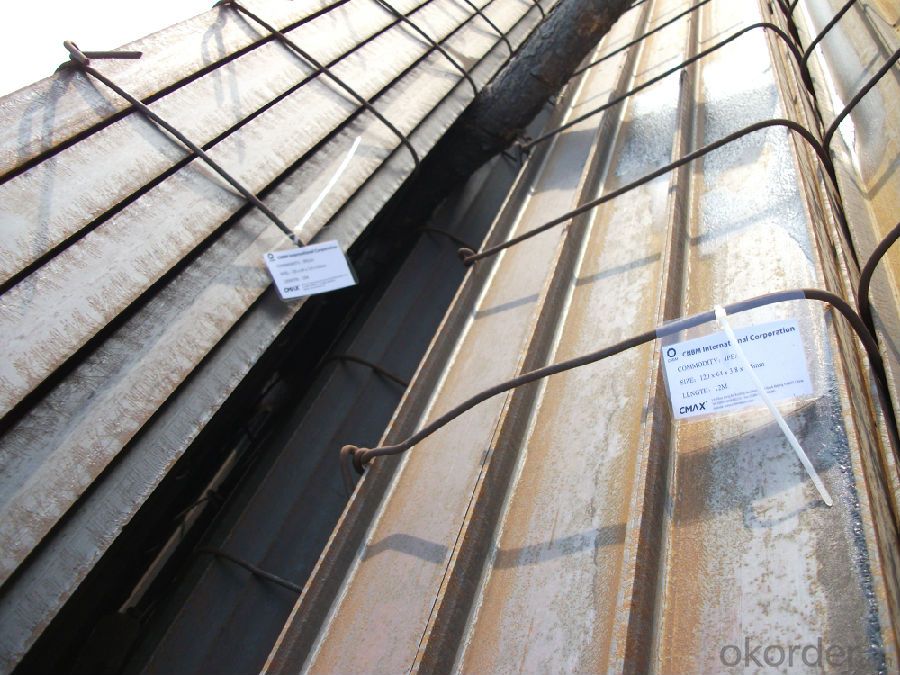
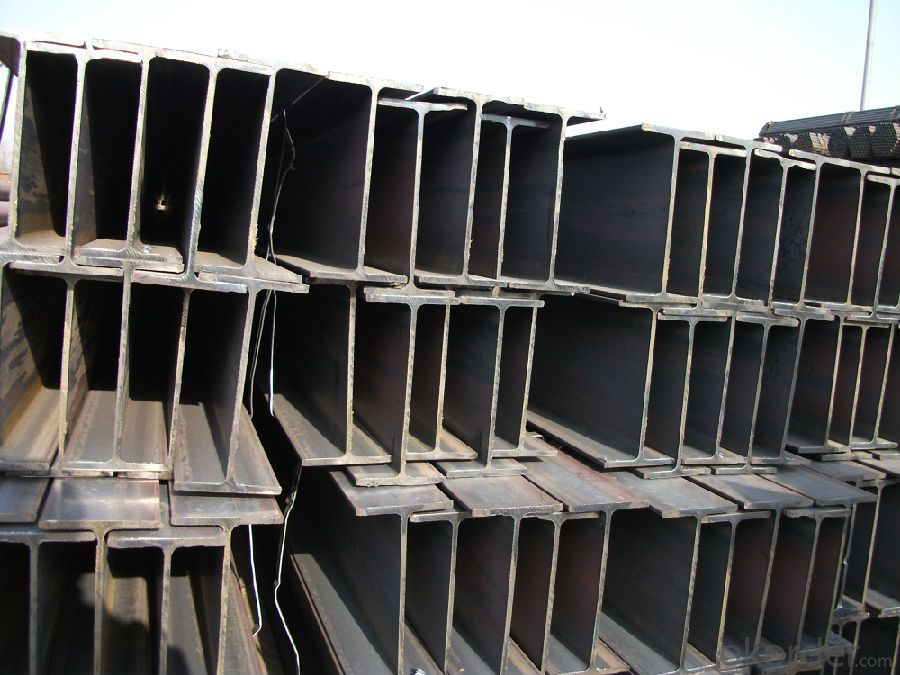
- Q: How do you calculate the load-bearing capacity of steel H-beams?
- In order to determine the load-bearing capacity of steel H-beams, several factors must be taken into consideration. To begin, it is necessary to calculate the cross-sectional area of the H-beam by measuring the dimensions of the flanges and web. The flanges, which are the horizontal sections of the H-beam, and the web, which is the vertical section connecting the flanges, play a crucial role in this calculation. Following that, the material properties of the steel being used, including the yield strength and modulus of elasticity, need to be identified. The yield strength represents the maximum stress the steel can withstand without experiencing permanent deformation, while the modulus of elasticity measures the material's stiffness. Once these parameters are known, the moment of inertia of the H-beam can be calculated. The moment of inertia provides insight into the beam's resistance to bending and depends on the shape and dimensions of its cross-section. Using the moment of inertia, the section modulus can be determined. The section modulus, which is the ratio of the moment of inertia to the distance from the neutral axis of the beam to the extreme fiber, indicates the beam's resistance to bending and is utilized to ascertain its load-bearing capacity. Finally, the load-bearing capacity of the steel H-beam can be calculated by dividing the section modulus by a safety factor. The safety factor takes into account uncertainties in the design and manufacturing processes and guarantees that the beam can withstand loads without excessive deflection or failure. The precise safety factor to be utilized depends on the intended application and the level of risk involved.
- Q: How do steel H-beams perform in dynamic loads?
- The structural characteristics of steel H-beams make them highly effective in withstanding dynamic loads. These beams have an H-shaped cross-section, providing excellent strength and rigidity that is ideal for applications where dynamic forces are a concern. When exposed to dynamic loads like impact or vibrations, steel H-beams show a remarkable ability to resist deformation and fatigue failure. The shape of the beams allows for even distribution of applied loads, minimizing stress concentrations and preventing localized failure points. This makes them highly reliable and durable under dynamic conditions. Additionally, steel has a high strength-to-weight ratio, meaning that H-beams can withstand significant dynamic loads while remaining relatively lightweight. This simplifies the structural design and reduces material and transportation costs. Furthermore, steel H-beams possess excellent elasticity, enabling them to absorb and dissipate energy from dynamic loads. This helps minimize potential damage or deformation to the structure and reduces the amplitude of vibrations. It also prevents the propagation of stress waves throughout the beam. In conclusion, steel H-beams are well-suited for dynamic loads due to their structural integrity, high strength-to-weight ratio, and elasticity. They can effectively resist deformation, fatigue, and impact caused by dynamic loads while maintaining their structural integrity and durability.
- Q: How do you calculate the plastic section modulus of steel H-beams?
- To determine the plastic section modulus of steel H-beams, it is necessary to go through a series of steps. The plastic section modulus serves as a measure of the beam's resistance to bending and is crucial in establishing its load-carrying capability. Firstly, the geometry of the H-beam must be determined. The plastic section modulus relies on various dimensions, including the width, height, flange thickness, and web thickness of the H-beam. These measurements are typically provided by the manufacturer or can be directly measured. Next, the area of the H-beam must be calculated. This involves subtracting the area of the flanges from the area of the web. The formula for the H-beam's area is as follows: Area = (2 * flange thickness * flange width) + (web thickness * web height). The centroid of the H-beam needs to be calculated as well. The centroid represents the point at which the entire area of the H-beam can be considered to act. The formula for determining the centroid is: Centroid = (A1 * y1 + A2 * y2) / (A1 + A2). In this formula, A1 and A2 refer to the areas of the flanges and web, respectively, while y1 and y2 represent the distances from the centroid of each area to the neutral axis. The moment of inertia, which gauges the H-beam's resistance to bending, must also be calculated. The parallel axis theorem can be used to determine the moment of inertia. The formula for the moment of inertia is as follows: I = (A1 * y1^2) + (A2 * y2^2) + (A1 * (y1 - Centroid)^2) + (A2 * (y2 - Centroid)^2). In this formula, A1, A2, y1, y2, and Centroid are defined as in step 3. Finally, the plastic section modulus can be calculated by dividing the moment of inertia by the distance from the neutral axis to the extreme fiber, which is typically the point of maximum stress. The formula for the plastic section modulus is: Z = I / c. In this formula, Z represents the plastic section modulus, I denotes the moment of inertia, and c signifies the distance from the neutral axis to the extreme fiber. By following these steps and utilizing the appropriate formulas, one can accurately compute the plastic section modulus of steel H-beams. This value is crucial in ascertaining the beam's load-carrying capacity and its ability to withstand bending forces.
- Q: Are steel H-beams suitable for mezzanine flooring?
- Yes, steel H-beams are suitable for mezzanine flooring. They provide excellent support and structural stability, making them a popular choice for mezzanine construction.
- Q: Can steel H-beams be used for temporary structures?
- Yes, steel H-beams can be used for temporary structures. Steel H-beams are commonly used in construction for their strength and durability. They can withstand heavy loads and provide structural support, making them suitable for temporary structures such as scaffolding, temporary bridges, and event stages. The versatility and ease of assembly of steel H-beams make them an ideal choice for temporary structures that need to be quickly erected and disassembled. Additionally, steel H-beams can be easily transported and reused for different projects, making them a cost-effective option for temporary structures.
- Q: Are Steel H-Beams suitable for seismic retrofitting or strengthening of existing structures?
- Seismic retrofitting or strengthening of existing structures is indeed suitable for Steel H-Beams. Their exceptional strength-to-weight ratio is well-known, making them an optimal choice for enhancing the structural integrity of buildings in seismic zones. H-Beams offer remarkable load-bearing capacity and resilience against lateral forces, which are crucial factors in seismic events. They can effectively reinforce existing columns, beams, and other structural members, enabling them to withstand the additional forces generated during earthquakes. Moreover, the installation and integration of Steel H-Beams into existing structures are effortless, resulting in minimal disruption during retrofitting projects. All in all, the utilization of Steel H-Beams in seismic retrofitting is a proven and efficient method to enhance the overall safety and durability of buildings situated in earthquake-prone areas.
- Q: Are steel H-beams suitable for industrial structures?
- Yes, steel H-beams are highly suitable for industrial structures. They provide excellent structural integrity and can withstand heavy loads and high levels of stress. The H shape of the beam allows for better distribution of weight, making it ideal for supporting large spans and providing stability. Additionally, steel H-beams are durable, long-lasting, and resistant to fire and corrosion, making them a preferred choice for industrial applications.
- Q: What are the sustainability certifications for steel H-beams?
- Some of the sustainability certifications for steel H-beams include the Leadership in Energy and Environmental Design (LEED) certification, the Green Globes certification, and the Building Research Establishment Environmental Assessment Method (BREEAM) certification. These certifications assess the environmental impact of the manufacturing process, the energy efficiency of the final product, and the overall sustainability practices of the steel manufacturer. Additionally, steel H-beams may also be certified under specific programs like the ResponsibleSteel certification, which focuses specifically on responsible sourcing and production practices in the steel industry. These certifications ensure that the steel H-beams meet certain environmental and sustainability standards, making them a more eco-friendly and sustainable choice for construction projects.
- Q: What are the common connections used for steel H-beams?
- The common connections used for steel H-beams are typically welded or bolted connections.
- Q: Can steel H-beams be used in bridge construction?
- Indeed, steel H-beams have the potential to be utilized in the construction of bridges. Their strength, durability, and versatility make them a popular choice for bridge construction. The unique H-shape of these beams enables them to efficiently bear heavy loads and withstand diverse environmental conditions. Moreover, the fabrication process for steel H-beams is simple and efficient, leading to cost-effective bridge construction. The success of numerous projects worldwide has solidified the status of steel H-beams as a favored option for engineers and contractors in bridge construction.
Send your message to us
H Beam with Good Quality and Multiple Material for Sale
- Loading Port:
- Tianjin
- Payment Terms:
- TT OR LC
- Min Order Qty:
- 25 m.t.
- Supply Capability:
- 20000 m.t./month
OKorder Service Pledge
OKorder Financial Service
Similar products
Hot products
Hot Searches
Related keywords
